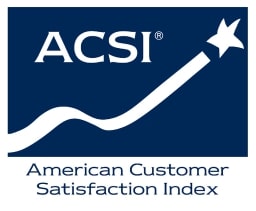Updated: May 30, 2024
Although the internet has long been an important part of day-to-day life, the last year has raised the stakes. Stay-at-home orders, social distancing, and other public-health measures introduced over the last few months have increased the world’s internet dependence to an unprecedented degree.
Virtual Meetings Become A Stay-at-Home Lifeline
Video calling has been critical in helping people adjust to a stay-at-home world, and it’s not hard to see why. With so many people unable to meet face-to-face, a video conference can provide the next-best-thing to in-person interaction.
Virtual face-to-face connections have become especially important in business. With so many people working from home now, it’s critical for workers to connect in a clear, personable way to maintain in-office levels of productivity. Video conferencing provides a perfect solution.
The Quality of the Call = The Quality Of Virtual Meetings
Video conferencing is only a useful substitute for in-person collaboration if video and sound on each call are clear and properly synchronized to the participants. Everyone on a call should be able to remain engaged and clear on what’s being said and by whom and when without continual technical distractions.
Although call quality can vary depending on the platform used, no video conferencing software can deliver a glitch-free experience without a stable internet connection. Video calling requires baseline levels of bandwidth for smooth, seamless communication. Latency is another important factor in video call quality, and it’s probably the least familiar to many readers.
The Virtual Meetings Upload Factor
Uploading is the process of sending data out to the internet, whereas downloading is the process of receiving data. For example, when you watch a movie on streaming video service, the entire process involves downloading data. Staying with this example, the only time you would upload data to a streaming service is when searching for something to watch, inputting login credentials, and similar activities.
In the course of using the internet, most people download much more data than they upload. This is why download speeds tend to be much higher on most traditional internet plans. It’s also why when advertising their plans, many ISPs focus almost exclusively on download speeds.
Video chatting, however, is different compared to most other activities people do on the internet. Each user in a video chat must send a continuous audio/video stream to every other participant, which requires uploading.
How Much Bandwidth Is Needed For Stable Video Calls?
The answer to this question depends on the call’s resolution and on the number of participants. In general, sustaining a stable, clear call over live video in standard definition (480p) requires a 1.0 Mbps connection speed and a 3.0 Mbps connection for high definition (1080p). These figures account for the fact that video conferencing requires both a continual download and a continual upload stream.

The above figures also represent 1:1 video chatting, with one connection communicating with one other. As you add more connections to a video chat, the amount of download bandwidth increases slightly. Fortunately, upload bandwidth remains the same no matter how many users participate in the call.
The Latency Factor In Virtual Meetings
In internet terms, latency is a measure of how much time it takes to send data from one computer to another. The lower a connection’s latency, the better. This number is especially important in video calling. High latency can cause lapses in receiving and sending images and audio between call participants. This can result in a call being choppy, with garbled, patchy audio and grainy images that freeze or become distorted and unstable.
GVEC Internet Fiber: Best For Virtual Meetings
With speeds of up to 1 Gbps and the ultra-reliability of fiber optics, GVEC Internet Fiber is based on the world’s fastest, most stable internet technology. And fiber-optic technology doesn’t just deliver more bandwidth than any other internet delivery method, it also delivers the lowest latencies, along with identical upload/download speeds. With GVEC Internet Fiber, you’ll get a stable, crystal-clear connection on every video chat, no matter how many users or what resolution. To find out if Fiber’s available in your neighborhood or to sign up, call GVEC Internet Internet at 800-699-4832. You can also visit our Sign Up page or our Internet Availability page.

